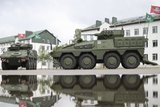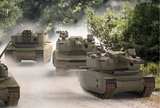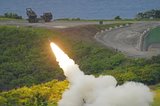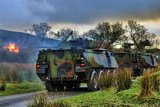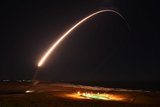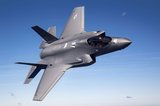Israel graduates first women tank commanders
The Israeli army on Thursday graduated the first four women from its tank commanders' school, a step toward the formation of all-female tank crews.
Another six have completed training as crew members, but actual deployment of any of the women will depend on the outcome of a review by senior officers, an armoured corps commander said.
The project is a pilot programme to test whether women can be an integral part of armoured operations. Four-member tank crews operate, often for many hours, in cramped conditions where physical strength is needed to handle heavy cannon shells and engine parts which may need to be handled in the event of a breakdown.
Five of the 15 original candidates did not complete training for various reasons. But armoured corps Lieutenant-Colonel Beni Aharon told journalists on Thursday that over the year-long selection and training process the women had proven themselves fit for the task.
'The purpose of the pilot programme was to determine if four women can operate a tank during routine security activity and the response is positive,' he said.
'The soldiers achieved all of the goals that were set for them.'
Opponents of the scheme, including retired army officers, have denounced the project as a dangerous experiment.
Some also speculated on the pitfalls of possible mixed-gender tank crews confined together for long periods but that was never realistically considered.
Israel does however have men and women serving together in combat infantry units although their accommodation, showers and toilet facilities are strictly segregated.
In December, the army reported a record high of 2,700 women serving in its combat units.
Military service is compulsory for most Israelis, with men serving two years and eight months and women two years.
Aharon said the women have been trained for routine border patrol not for full-scale warfare. They are seen as most likely to be deployed in southern Israel's Negev desert, which borders the restive Egyptian Sinai region.
More from Defence Notes
-
![Taiwan approved for $11 billion weapon purchase from US]()
Taiwan approved for $11 billion weapon purchase from US
The US State Department’s approval of a multi-billion-dollar sale of weapons to Taiwan includes tactical mission networks equipment, uncrewed aerial systems, artillery rocket systems and self-propelled howitzers as well as anti-tank guided missiles.
-
![Ireland spells out $2.3 billion shopping list in five-year defence spending plan]()
Ireland spells out $2.3 billion shopping list in five-year defence spending plan
Ireland’s multi-annual investment in capital defence spending is set to rise from €300m in 2026 to €360m in 2029–2030 with major upgrades across land, air, maritime and cyber domains.
-
![Canada to deepen integration of multi-domain capabilities to strengthen its defences]()
Canada to deepen integration of multi-domain capabilities to strengthen its defences
The Canadian Department of National Defence has created new organisations to manage the procurement and integration of all-domain solutions and allocated US$258.33 million to strengthen production capacities.
-
![US National Security Strategy prioritises advanced military capabilities and national industry]()
US National Security Strategy prioritises advanced military capabilities and national industry
The 2025 NSS has emphasised investment in the US nuclear and air defence inventory and national industry, but it leaves multiple unanswered questions on how the White House will implement this approach.
-
![Canada set to look away from its neighbour and across the Atlantic for partners]()
Canada set to look away from its neighbour and across the Atlantic for partners
While non-EU UK struggles to join the Security Action for Europe initiative, which provides loans for defence programmes, Canada has become the first country outside Europe to get access – and did so for a nominal fee.
-
![NATO experiments with solutions to integrate networks, AI and uncrewed systems]()
NATO experiments with solutions to integrate networks, AI and uncrewed systems
During the latest edition of the NATO DiBaX, the alliance tested multiple capabilities to inform requirements for future efforts.









